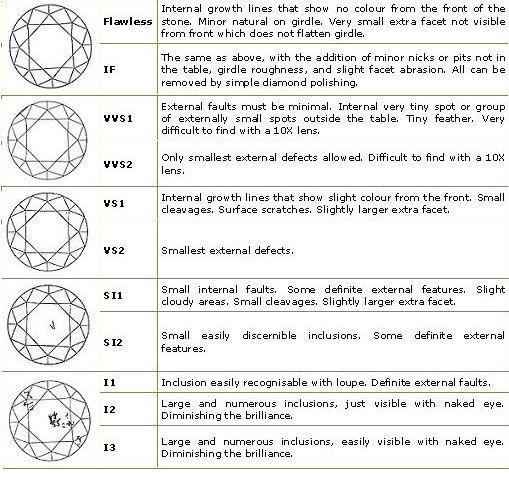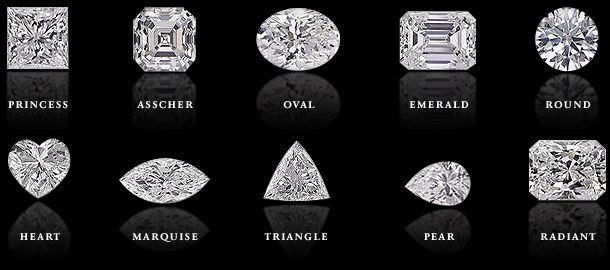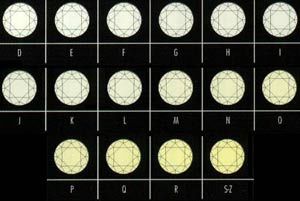Information
Your Guide to Buying Diamonds
Many people are confused about how diamonds are priced. The best explanation is that asking for the price of a diamond is like asking for the price of a house.
A real estate agent can't quote you a price for a house without knowing its size, condition, location, etc. This process is the same one used when buying a diamond. A diamond's beauty, rarity, and price depend on the interplay of all the 4Cs—cut, clarity, carat, and colour.
The 4Cs are used throughout the world to classify the rarity of diamonds. Diamonds with the combination of the highest 4C ratings are more rare and, consequently, more expensive. No one C is more important than another in terms of beauty and it is important to note that each of the 4Cs will not diminish in value over time. Once you have established those 4C characteristics that are most important to you, we can then begin to show you various options and prices.
CaratRefers to the weight of a diamond. Carat is often confused with size even though it is actually a measure of weight. One carat is equivalent to 200 milligrammes. One carat can also be pided into 100 “points.” A .75 carat diamond is the same as a 75-points or 3/4 carat diamond. A 1-carat diamond costs exactly twice the price of a half-carat diamond, right? Wrong. Since larger diamonds are found less frequently in nature, which places them at the rarest level of the Diamond Quality Pyramid, a 1-carat diamond will cost more than twice a 1/2-carat diamond (assuming colour, clarity and cut remain constant). Cut and mounting can make a diamond appear larger (or smaller) than its actual weight. We can help you to find the right diamond and setting to optimise the beauty of your stone. | ClarityRefers to the presence of inclusions in a diamond. Inclusions are natural identifying characteristics such as minerals or fractures, appearing while diamonds are formed in the earth. They may look like tiny crystals, clouds or feathers. To view inclusions, jewellers use a magnifying loupe. This tool allows jewellers to see a diamond at 10 times its actual size so that inclusions are easier to see. The position of inclusions can affect the value of a diamond. There are very few flawless diamonds found in nature, thus these diamonds are much more valuable. Inclusions are ranked on a scale of perfection, known as clarity, which was established by the Gemological Institute of America (GIA). The clarity scale, ranging from F (Flawless) to Included (I), is based on the visibility of inclusions at a magnification of 10x. Some inclusions can be hidden by a mounting, thus having little effect on the beauty of a diamond. An inclusion in the middle or top of a diamond could impact the dispersion of light, sometimes making the diamond less brilliant. |
| The greater a diamond's clarity, the more brilliant, valuable and rare it is and the higher it is on the Diamond Quality Pyramid.
| Diamond ShapesWhen you start to think about buying a diamond—and the love it will symbolise—you naturally want the best you can afford and a beautiful stone you will treasure forever. Diamonds can be found in a range of prices - and you're certain to find one that suits your taste and what you plan to spend. If you're about to buy a Diamond Engagement Ring, you may want to consider spending the commonly accepted guideline of two months' salary. But it's up to you to settle on a diamond that will truly represent your deepest emotions and the promise for the future you will share.
|
ColourRefers to the degree to which a diamond is colourless. Diamonds range in colour from icy winter whites to warm summer whites. Diamonds are graded on a colour scale established by the Gemological Institute of America (GIA) which ranges from D (colourless) to Z. Warmer coloured diamonds (K-Z) are particularly desirable when set in yellow gold. Icy winter whites (D-J) look stunning set in white gold or platinum. Colour differences are very subtle and it is very difficult to see the difference between, say, an E and an F. Therefore, colours are graded under controlled lighting conditions and are compared to a master set for accuracy. Truly colourless stones, graded D, treasured for their rarity, are highest on the Diamond Quality Pyramid. Colour, however, ultimately comes down to personal taste. We can show you a variety of colour grades next to one another to help you determine your colour preference.
| CutRefers to the angles and proportions of a diamond. Based on scientific formula's, a well-cut diamond will internally reflect light from one mirror-like facet to another and disperse and reflect it through the top of the stone. This results in a display of brilliance and fire, thereby placing well-cut diamonds higher on the Diamond Quality Pyramid than deep or shallow-cut diamonds. Diamonds that are cut too deep or too shallow lose or leak light through the side or bottom, resulting in less brilliance and ultimately, value. Cut also refers to shape—round, square, pear, or heart for example. Since a round diamond is symmetrical and capable of reflecting nearly all the light that enters, it is the most brilliant of all diamond shapes and follows specific proportional guidelines. Non-round shapes, also known as “fancy shapes,” will have their own guidelines to be considered well-cut.
|



